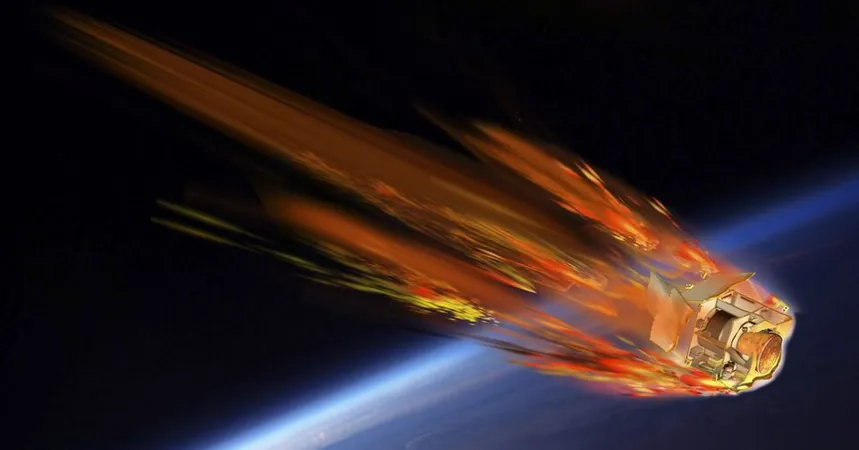
Exciting Experiment: Europe Plans to Obliterate a New Satellite in 2027! Here's Why It's a Game Changer for Space Exploration
2024-09-27
Introduction
In a groundbreaking initiative, the European Space Agency (ESA) has announced plans to launch a satellite in 2027, but this won't be just any satellite. The mission, known as the Destructive Reentry Assessment Container Object (DRACO), is designed with a daring objective: to deliberately allow the satellite to be destroyed upon reentry into Earth's atmosphere.
The Need for the DRACO Mission
Why would scientists choose to obliterate a brand-new satellite? The answer lies in the escalating crisis of space debris. As the number of satellites orbiting Earth grows, so does the risk of collisions and the creation of more space junk, which threatens both operational missions and future explorations. With the DRACO mission, the ESA aims to gather crucial data on how satellites disintegrate upon reentry, which could lead to innovative strategies for mitigating space debris.
Mission Objectives and Design
The mission will involve the satellite collecting data on its own destruction. Inside, it will host a 40-centimeter capsule designed to survive the catastrophic event and transmit valuable information back to Earth as it splashes down in the ocean. This innovative design will enable scientists to closely analyze the reentry process and the materials involved.
Collaboration with Deimos
Developed in collaboration with aerospace engineering company Deimos, DRACO will be about the size of a washing machine and weigh approximately 200 kilograms (441 pounds). It will be equipped with 200 sensors and four cameras, providing a wealth of information, but it will lack propulsion and navigation systems to realistically simulate an uncontrolled reentry scenario.
Challenges and Time Constraints
The timing is crucial; the ESA is aiming to gather all pertinent data within a critical 20-minute window before the capsule descends into the watery depths. The primary challenge lies in deploying a parachute while the capsule is spinning through the atmosphere, complicating data transmission efforts.
Significance of the Mission
This ambitious mission is a significant step in ESA's Zero Debris Charter, which seeks to prevent the creation of additional space debris by 2030. As space becomes increasingly crowded, the success of DRACO could pave the way for safer satellite launches and more responsible exploration of our planet's orbital space.
Conclusion
Mark your calendars for 2027, as this event promises not just scientific advancement but also the reduction of one of modern space exploration's biggest threats!


 Brasil (PT)
Brasil (PT)
 Canada (EN)
Canada (EN)
 Chile (ES)
Chile (ES)
 España (ES)
España (ES)
 France (FR)
France (FR)
 Hong Kong (EN)
Hong Kong (EN)
 Italia (IT)
Italia (IT)
 日本 (JA)
日本 (JA)
 Magyarország (HU)
Magyarország (HU)
 Norge (NO)
Norge (NO)
 Polska (PL)
Polska (PL)
 Schweiz (DE)
Schweiz (DE)
 Singapore (EN)
Singapore (EN)
 Sverige (SV)
Sverige (SV)
 Suomi (FI)
Suomi (FI)
 Türkiye (TR)
Türkiye (TR)